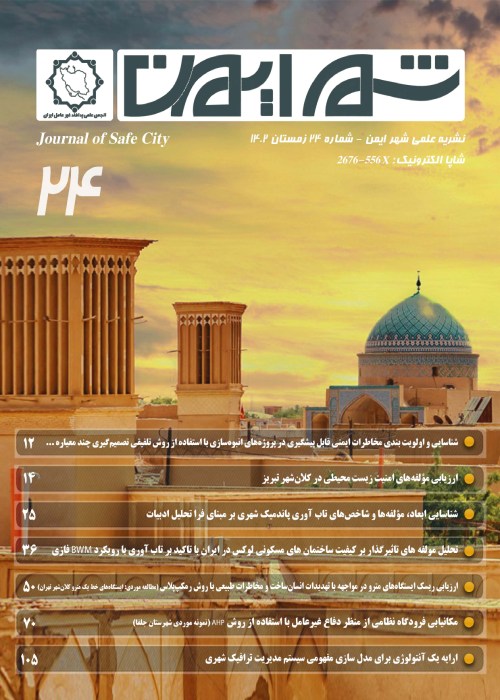Introducing a Method for Determining the Safe Area of Urban Area Development at Risk of Explosion of Oil Depots (Case Study of Tehran Oil Depots)
The proximity of residential structures to hazardous industrial facilities is one of the challenges facing disaster management in natural or artificial disasters in today's modern world. Therefore, calculating the consequences of damage to these facilities and its effects on damage and loss of residential structures is of great importance in urban planning and disaster management. The consequences of damage to hazardous facilities, depending on the type of activity and the hazardous materials they store, can be assessed in different scenarios. Overpressure due to explosion, heat radiation due to fire, and poisoning due to the spread of toxic substances are the main reasons for the threat to urban areas adjacent to hazardous facilities. Different scenarios are considered in each case depending on the vulnerability and risk reduction goals. Tehran is also exposed to various hazards caused by damage to hazardous facilities. Among the types of facilities that are thought to be a severe threat to the residents of Tehran, the oil depots in the northwest, northeast, and south of the city are more important. Therefore, determining the safe area around these facilities and how to comply with them has always been one of the challenges in crisis management in this city. This article, taking into account the consequences of the vapor cloud explosion (as the worst-case scenario), determines the safe area around these three oil depots in Tehran. For this purpose, two conventional methods have been used to calculate the overpressure due to vapor cloud explosion. The difference between the results of the two methods has been discussed. Also, by examining the vulnerability of the buildings around each of the oil depots, the standard overpressure for the demolition of the buildings has been determined. Finally, the safe area around these facilities has been calculated.
- حق عضویت دریافتی صرف حمایت از نشریات عضو و نگهداری، تکمیل و توسعه مگیران میشود.
- پرداخت حق اشتراک و دانلود مقالات اجازه بازنشر آن در سایر رسانههای چاپی و دیجیتال را به کاربر نمیدهد.


